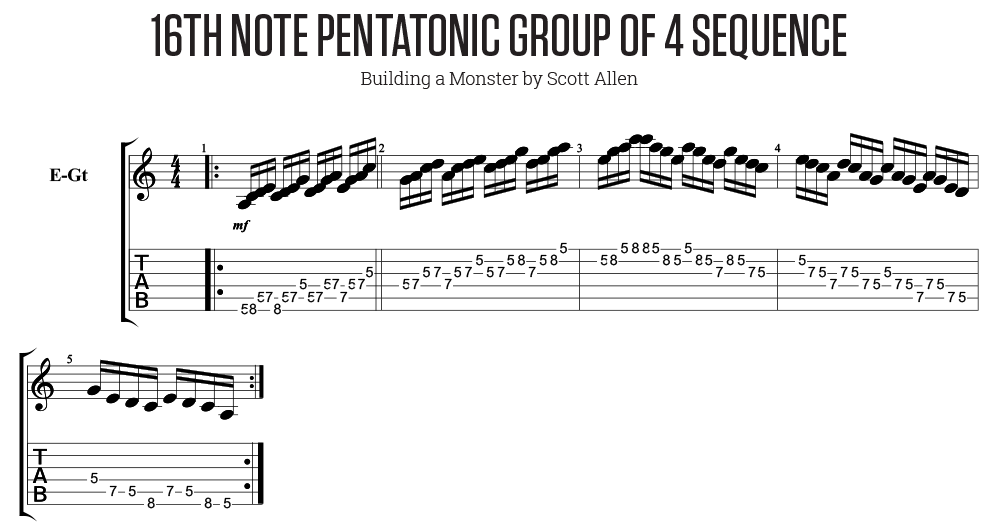![]()
When I first started out as a player, I was feeling pretty unsure of how to start. All of my heroes possessed an almost godlike precision and a fluency that I was sure I could never grasp. The key to not throwing in the towel is to take things one step at a time. Break down mechanics into smaller steps and practice until you master them before moving on to the next level.
One of the things that has helped me develop my chops is the steady practice of scale sequences. Practicing sequences works on so many aspects of your playing it is incredible. You are developing visualization, fret hand finger independence, picking, left- and right-hand coordination, speed, vocabulary, and more.
When it comes to developing speed and control there is no better tool to employ than the metronome. Yes, the dreaded metronome, long feared by guitar students everywhere. But much like Frankenstein’s monster, the metronome is simply misunderstood. In fact, students looking to develop speed and picking technique have never had a better friend. The key to using this beast for your improvement is to play all examples slowly in the correct rhythm and then gradually and incrementally build speed. I would recommend increasing the metronome tempo no more than 8-12 bpm for each example as you increase speed. By playing everything slowly you are burning into your fingers the proper technique that will serve you well as you progress as long as you use the exact same technique slow as you would fast. Don’t hold your breath, don’t stiffen up. These things will only serve to build tension into your playing. Let’s get on with it shall we?
All of our examples today will use our good friend the box pentatonic shape in A minor. This first example is a group of 4 sequence. This is one of the most commonly used scale sequences and is a very good place to start. Notice the repetition that is going on throughout the pattern and be sure to use alternate strokes as you play. Start off by playing it through without the metronome just to get a feel for it. Then add the metronome somewhere in the range of 40-55 bpm to start.

Our next example is the pentatonic triplet sequence. This one is a favorite of David Gilmour’s among others. Again, notice the repetition and use alternate strokes as you practice. Start this one in the 50-65 bpm range.

Last but not least, we have the pentatonic sixteenth note triplet sequence. This one is played 6 notes per beat and is a favorite of such players as Eric Johnson and Shawn Lane. While it is the least complicated sequence, it will still feel challenging because of the large number of notes played per beat. Start this one around 40 bpm.

That is all for this lesson, and please remember that the metronome is not a monster, it is your friend!


